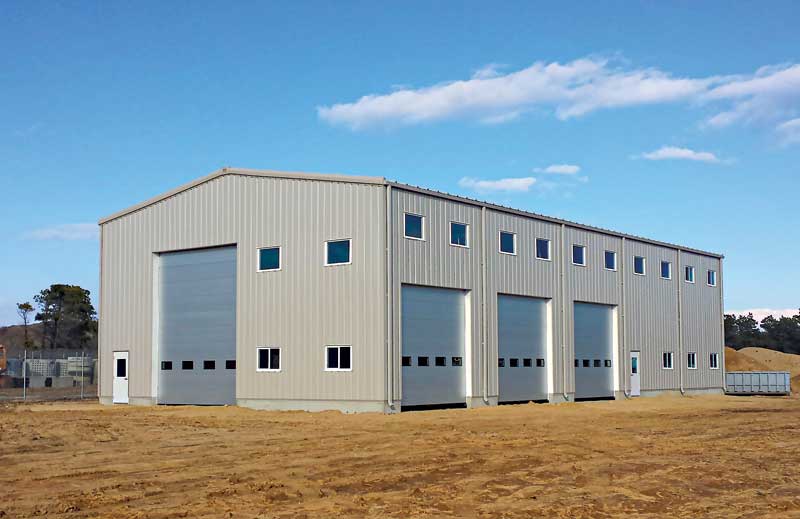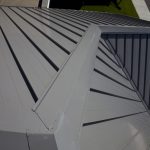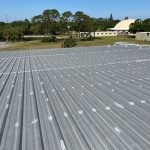Metal buildings are ubiquitous. From warehouses and workshops to agricultural structures and even homes, these actors are a testament to efficiency and durability. But every actor needs a sidekick, and in the world of metal buildings, that role falls to the often-overlooked metal building door.
These sidekicks are more than just entryways; they are guardians of temperature control, security, safety, and even aesthetics. A properly installed metal building door is powerful; doors play a vital role in a user’s first impression. They can make or break energy code compliance, and they are a building’s first and last line of defense against security threats. But there are a few factors to consider before purchasing any of these metal sidekicks.
The most common types
Not all metal building doors are created equal. Each type comes with its own strengths and weaknesses, making them suited for different purposes. There are several common types:
- Hollow metal doors are the go-to option for most commercial and industrial applications and can be purchased as knock-down or pre-assembled doors. Knock-down doors are more common in the metal building industry, but pre-assembled doors are rapidly gaining steam, as they save a considerable amount of time during installation and are made to order to meet job specifications. Hollow metal doors offer a robust balance of strength, security, and insulation.
- Glass storefront doors are offered in a variety of finishes, glazing and hardware options, sizes, and sidelites. They are commonly used in office buildings, retail spaces, and entertainment facilities.
- Rolling steel doors are ideal for large openings, offering quick and efficient access for vehicles and equipment.
- Overhead doors, similar to garage doors, are built for heavy-duty use. They are perfect for large openings needing superior insulation and weatherproofing.
Features for every need
Metal building doors can be customized to fit a variety of needs. Some of the most common features include the following:
- Core: The core of a metal building door plays a crucial role in its performance, providing important properties such as strength, insulation, sound abatement, and fire resistance. The most common types of cores found in metal building doors include polystyrene, polyurethane, and steel stiffened.
- Door preps: Proper door/frame preps will meet the needs of the building application and minimize the installation time.
- Lite kits: Let the light in with various lite kit sizes and glazing options.
- Louvers and ventilation: Ensure proper airflow and prevent moisture buildup with strategically placed louvers.
- Hardware and automation: From heavy-duty locks and panic bars to automatic openers and access control systems, the hardware possibilities are endless.
Key considerations
Quality
Whether a metal building door system is knock-down or pre-assembled, its quality has a ripple effect far beyond simply swinging open and shut. Quality impacts everything, from energy efficiency and safety to security and brand perception. Properly insulated and sealed doors in colder climate zones not only keep the cool in during summer and the heat in during winter, but can also offer building owners considerable savings on utility bills. And do not skimp on high-quality safety features: fire-rated doors can be instrumental in delaying the spread of flames and smoke, providing occupants valuable time to evacuate in the event of a fire. Sound transmission control (STC) doors meet sound transmission requirements in buildings where acoustics control is needed, and wind-rated doors are designed to meet design pressures necessary for certain regions of the country.
Installation
Perhaps the most often overlooked factor related to doors is the installation process. Purchasing the best, highest quality door system on the market is one thing, but if the door frame is not installed plumb, square, and level, the door will not perform as it should. Incorrect installation is one of the top reasons for a callback on a building.
Maintenance
Proper installation by qualified professionals ensures a weathertight seal and smooth operation. Regular maintenance—including hardware lubrication and checking for wear and tear on the weather seals and sweeps—keeps the door functioning flawlessly for years to come.
The future
The world of metal building doors is constantly evolving. Look out for advancements in materials like fire-resistant and lightweight composites, integrated smart technology for automated control, and sustainable practices like recycled content and solar-powered openers.
Don Nelson, business manager of PDL Building Products, is a 38-year veteran of the door and window industry and has worked in the metal building market for 28 years.






